
The speckled bush-cricket is a flightless species of bush-cricket belonging to the family Tettigoniidae. The species was originally described as Locusta punctatissima in 1792.

Knipowitschia is a genus of marine, fresh and brackish water gobies native to Eurasia. The genus name almost certainly honours Nikolai Mikhailovich Knipovich (1862-1938), a biologist who led a number of expeditions to the Caspian Sea.

Knipowitschia punctatissima, the Italian spring goby, is a species of goby endemic to Italy where it inhabits fresh, clear waters of springs, streams, and channels with slow water movements. This species can reach a length of 4.5 centimetres (1.8 in) SL.
Parasiccia is a genus of moths in the subfamily Arctiinae.

Limanda is a genus of righteye flounders native to the northern Atlantic and Pacific oceans.
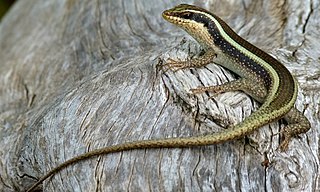
The African striped skink, commonly called the striped skink, is a species of lizard in the skink family (Scincidae). The species is widespread in East Africa and Southern Africa. It is not a close relation to the Australian striped skink, Ctenotus taeniolatus.

The Noronha skink is a species of skink from the island of Fernando de Noronha off northeastern Brazil. It is covered with dark and light spots on the upperparts and is usually about 7 to 10 cm in length. The tail is long and muscular, but breaks off easily. Very common throughout Fernando de Noronha, it is an opportunistic feeder, eating both insects and plant material, including nectar from the Erythrina velutina tree, as well as other material ranging from cookie crumbs to eggs of its own species. Introduced predators such as feral cats prey on it and several parasitic worms infect it.
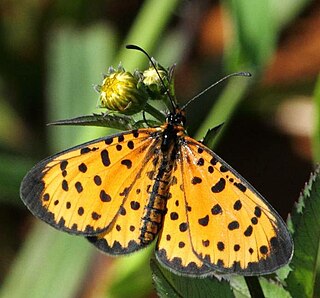
Pardopsis is a monotypic butterfly genus in the family Nymphalidae.
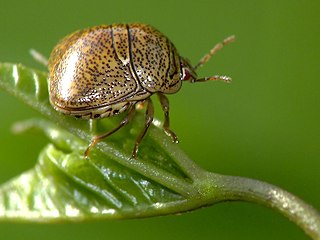
Plataspidae are a family of shield bugs native to the Old World. They are a family of hemipteran insects of the suborder Heteroptera.
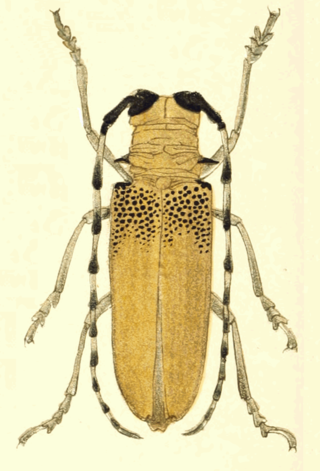
Apriona is a genus of longhorn beetles in the subfamily Lamiinae.
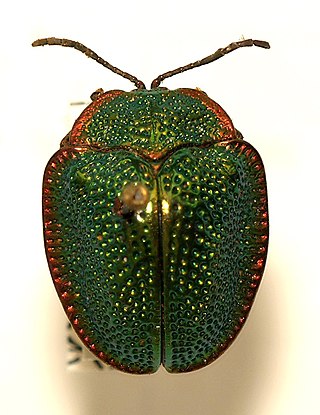
Polychalca punctatissima is a species of tortoise beetles belonging to the family Chrysomelidae.

Scopula punctatissima is a moth of the family Geometridae. It is found in Taiwan.
Megachile punctatissima is a species of bee in the family Megachilidae. It was described by Spinola in 1806.
Apriona punctatissima is a species of beetle in the family Cerambycidae. It was described by Kaup in 1866. It is known from Sulawesi.

Trachylepis punctatissima, commonly called the montane speckled skink or speckled rock skink, is a lizard in the skink family (Scincidae) which is widespread in southern Africa. The common and adaptable species occurs in a variety of habitat types at middle to high altitudes. It was for a time treated as a southern race of the African striped skink, T. striata.

Hypoponera punctatissima, or Roger's ant, is a species of ant in the family Formicidae.
Ironoquia punctatissima is a species of northern caddisfly in the family Limnephilidae. It is found in North America.

Canthigaster punctatissima, known as the spotted sharpnose puffer or the spotted sharpnosed puffer, is a species of pufferfish in the family Tetraodontidae. It is native to the Eastern Pacific, where it ranges from Guaymas, Mexico to Panama and the Galápagos Islands. It is replaced by its close relatives C. janthinoptera and C. jactator in the Western Pacific and the Hawaiian Islands, respectively. It is found in sheltered areas of rocky reefs at a depth range of 3 to 21 m and reaches 9 cm in total length. The species is reported to be monogamous.













